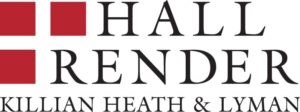
The DFW Hospital Council is posting blogs submitted by our Associate Members. The following was provided by Hall Render. For guidelines, please contact Chris Wilson at chrisw@dfwhc.org.

You can’t turn on the television or open a news site today without being bombarded by new sexual harassment scandals. Given the current spotlight, and significant liability under both state and federal law, employers must understand how to conduct an effective sexual harassment investigation in order to protect the organization and its employees.
As a preliminary matter, the law imposes liability on employers who either knew or should have known of the harassment and failed to conduct a prompt and thorough investigation. Therefore, the first step is to identify the issues requiring investigation, with specificity. Meet immediately with the accuser to obtain the whole story, and document in writing so that a proper investigation can be completed (and the allegations don’t change over time).
Next, form an investigative team. Team members should be impartial and capable of navigating the delicate nature of the allegations. Depending on the circumstances, you may want to consider implementing security precautions at this time to protect the accuser, witnesses, and the integrity of the investigation.
Once the investigative team is identified, create a plan for the investigation and establish a time frame. Who will interview who? When? Where? Witnesses with the most knowledge should be interviewed first to help guide subsequent discussions. Also determine how the interview will be documented: will witnesses prepare their own written statements, or will interviewers prepare documents for review, edit and acknowledgement by witnesses?

As the investigation ramps up, it will be paramount to minimize potential witness intimidation. This may involve separating the accused and accuser via shift or location changes or, if deemed necessary, via suspension of the accused. Be careful not to “punish” the accuser either directly or indirectly (e.g. through an unwanted shift change). If the accuser requests changes to his/her schedule/shift/location, be sure to document the voluntary nature of the request in writing.
Before conducting the interviews, review and preserve the relevant documents pertaining to the matter. The relevance of the documents depends upon the specific facts giving rise to the allegations, but personnel files, incident reports, video surveillance, emails, badge (location) tracking reports, time records, etc. may be important and should be reviewed to assure the interviews are as thorough as possible.
During the interviews, strive to obtain the maximum amount of detail – do not summarize or interpret information provided by witnesses. Instead, capture the discussion with quotations whenever possible, and don’t exclude profanity or graphic detail when part of the incident description. Be sure to ask each interviewee to identify potential other witnesses and evidence, and follow-up on each.
Following the initial round of interviews, consider if there is new information, potential inconsistencies between the testimony, or additional considerations regarding a witnesses’ credibility such that second interviews are needed.

Once you’ve completed the investigation, make a decision regarding the outcome and needed next steps. You may conclude that: unlawful harassment occurred; inappropriate conduct (but not unlawful harassment) occurred; nothing inappropriate occurred; or that there is insufficient evidence to conclude any of the above. In “he said she said” scenarios, a final determination of “inconclusive” is not unusual. Nonetheless, the law requires that the employer take remedial action calculated to end the harassment. Therefore, even inconclusive investigations must end, at a minimum, with warnings about future conduct and non-retaliation.
Regardless of the final determination, you must close the loop with the accuser. That doesn’t mean that you have to provide details of the remedial action taken against the accused, but it does mean that you have to meet again with the accuser, inform him/her that the investigation is complete, and require that s/he report any retaliation or future concerns.
Finally, it’s time for the employer to document a thorough summary of the investigation. Document the proactive and corrective actions taken to resolve the incident, including any disciplinary action, training, education, etc. The investigation summary, with all documentation attached, should be marked confidential and filed in the Human Resources or Legal departments (rather than in an employee’s personnel file).
Ultimately, however, employers should take proactive steps to ensure that sexual harassment does not occur in the first place. Ensure that you have a robust and well-communicated anti-harassment policy that meets legal standards. Conduct regular anti-sexual harassment training for all employees, especially those who may act in a supervisory role or a position of apparent authority (e.g. physicians).
This article is educational in nature and is not intended as legal advice. Always consult your legal counsel with specific legal matters. If you have questions or would like additional information, please contact:
• Robin Sheridan, 414-721-0469 or rsheridan@hallrender.com;
• Richard Davis, 414-721-0459 or rdavis@hallrender.com; or
• Your regular Hall Render attorney.
Robin and Richard are attorneys with Hall, Render, Killian, Heath & Lyman, P.C., the largest health care-focused law firm in the country. Please visit the Hall Render Blog at http://blogs.hallrender.com/ for more information on healthcare law.